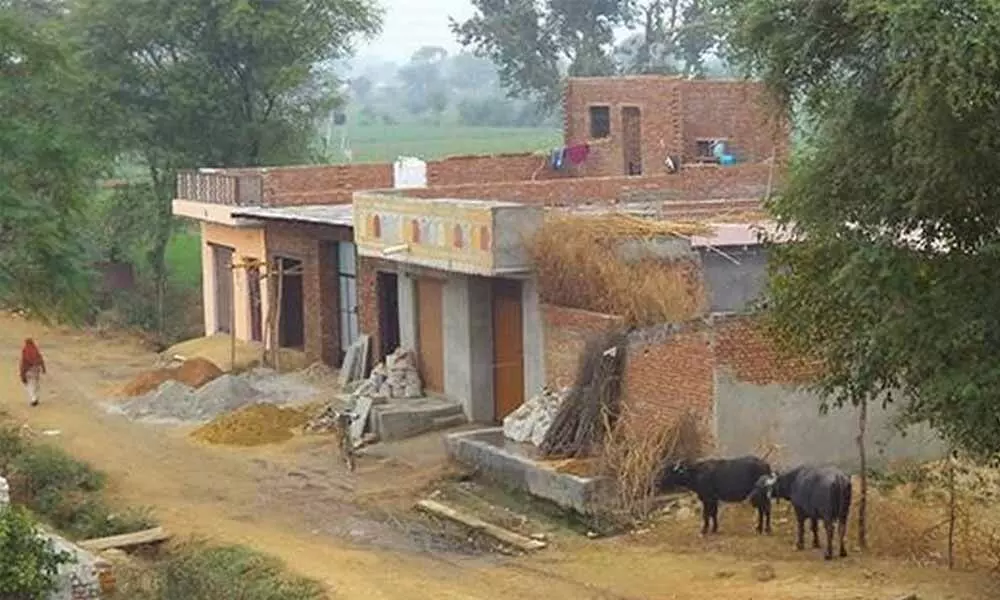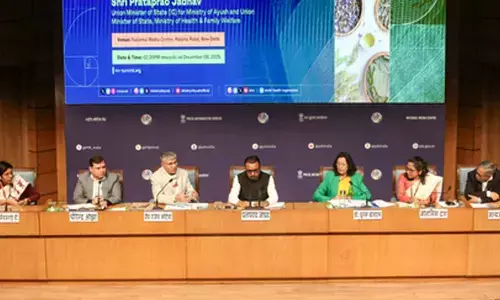Why rural India is combating Covid 2.0 better

Why rural India is combating Covid 2.0 better
The Covid-19 pandemic started as an urban phenomenon. Rural areas seem to be doing better in terms of ensuring that the virus does not enter their villages.
The Covid-19 pandemic started as an urban phenomenon. Rural areas seem to be doing better in terms of ensuring that the virus does not enter their villages.
Health infrastructure in rural areas is significantly less if not worse as compared to urban areas. According to the National Health Profile 2019, there were 1.2 government hospital beds per 1000 people in urban areas compared to just 0.3 in rural areas. The literacy rate is also less in rural areas. The villagers do not have the kind of scientific temper and awareness as the urbanites.
But if one studies the issue of surge of Covid cases a little closely the ground realities indicate that the socio-economic aspect also seems to be playing a major role in the surge of cases in rural areas which have over a period remained as gram panchayats but are considered to be no less than towns in terms of money power and political power. In all such villages the pandemic has been spreading very fast. For example East Godavari district in Andhra Pradesh. Here the fatality rate has gone up.
But in rural areas which do not have that much influence of urban lifestyle have demonstrated that they can stop the entry of virus. There are any number of examples of villages which have the distinction of being Corona-free both during first and second wave. They should be eye openers for the so-called educated urban crowd including several politicians who think that health protocols are not for them and they are Corona proof.
Dr Rakesh Mishra has rightly pointed that in the first wave people had taken enough care but now they are not following Covid norms. He opined that the surge we are seeing is because of the sheer negligence on the part of the people.
In the backdrop of this, the success stories of the villages which had succeeded in putting a check on the entry of Coronavirus into their villages clearly indicates that the urbanites lack the kind of determination which the rural people have. If a village decides to do something, no one can stop them and that has what some villages across the country have proved. But in urban areas, people brazenly violate all norms and feel because they feel they are law unto themselves.
First let us see how some villages have become role models.
According to official press release two months ago, a girl in Bhosi village of Maharashtra's Nanded district was found coronavirus positive, infected after attending a wedding.
Days later, five people from the village, having a population of around 6,000 were also infected, sending local body members and health officials into a tizzy.
"A health camp was held in the village in coordination with the gram panchayat and the health department to conduct Covid tests. Rapid Antigen Tests and RT-PCR tests revealed that 119 people were positive."
"It was decided to isolate the patients to break the chain of coronavirus spreading to others. Accordingly, all the infected people were persuaded to go and live on their fields for 15-17 days, as mandated by the guidelines of the Ministry of Health and Family Welfare for people with mild infections," the release said.
Farm labourers and others who did not own farms were accommodated in a makeshift 40 feet by 60 feet shed on the farm of Zilla Parishad member Prakash Deshmukh Bhosikar who took the initiative to organise the health camp.
"Ashatai village health workers and Anganwadi sevika would visit the fields every day and interact with patients.Food and medicines were also provided on the spot and all the villagers cooperated."
After 15 to 20 days of isolation, the villagers returned home as coronavirus-free persons after a health check-up, it said. "A month and a half later, there is no new patient in the village. Covid can be fought effectively by adopting the age-old path of isolation as was being done during the days of the plague, even in villages without adequate health facilities." This was the story circulated by the Central government's Press Information Bureau (PIB).
While in Maharashtra the village could check further spread after people were infected, in the two Telugu States of Telangana and Andhra Pradesh, villages succeeded in keeping the virus at Bay. Take for example, Gundepalli villagers of Nallajarla mandal, West Godavari district who are living without fear of Covid-19 due to the collective efforts of all villagers including children to make it Corona free village.
Even in the second wave of pandemic, The village with more than 330 families and population of about 1300 has not registered even a single case and set a perfect example to other villages in the district and state on how to fight Covid and prevent the entry of Virus.
The village secretary Banotu Venkateswarlu said he has been creating awareness among the villagers since the start of the Covid in 2020. This village has also demonstrated that they do not lag in using technology. He had created a Whatsapp group and added the number of villagers and created awareness on the Covid protocol, problems of the patients infected with Covid, precautions to be taken to check virus, and safety measures to be followed all villagers when they go outside'.
The villagers avoided marriages and other functions for more than a year and did not go to other places to attend the functions. This does not mean no marriages took place in the village. Only 10 members including the bride and bridegroom and parents were permitted for the marriage in the village. Village Secretary distributed cloth masks to the villagers and ensured that they do not lower the guard.
The villagers are attending to their agriculture farm works and NREGS works. But, using mask is mandatory for all and that worked wonders. This reminds me of a Telugu adage, " A dhobi is more intelligent than an educated person."
In Telangana State, the tribal village of Jagannathpur in Jagtial district in the Telangana State has shown a new path to lead a corona-free life. Not a single corona positive case was reported in the habitation which mostly consists of Gond tribes in the first and second wave of Covid pandemic.
Located amidst thick forests and on the banks of Godavari, dwellers in the village have been wearing face mask all the time and continue to sanitise their habitations regularly. The Village Panchayat has made arrangements for the supply of face masks and sanitizers free of cost to the majority of 800 population in the village.
Ever since the corona virus broke out in the state in March last year, the local panchayat imposed strict restrictions on the movement of people. No one is permitted to go out to any other place for work and instead they were provided work under the Employment Guarantee Scheme. Outsiders were also completely banned from entering Jagannathpur since last year.
This village has a women Sarpanch and she proved to be real administrator who could carry all villagers with her. She said that it was not an easy task to convince people from stopping them to go out of the village where 80 per cent of the inhabitants were daily job seekers. Special arrangements were made to supply essential commodities to the poor to ensure that they do not move out of the village. If any one was found with corona symptoms , they were immediately sent to covid testing centre at Raikal mandal head quarters. "Till date, no corona positive case was reported from the village " , the Sarpanch stated.
Malavandlapalle village with a population of 400 families located in Siddiracherla Panchayat in Narpala mandal Anantapur district is another Covid-free village with a young and educated and proactive Sarpanch Ramanjeneyulu taking keen interest in keeping Covid-19 at bay. Stillness and curfew like conditions reign supreme in the village from 12 pm to 6 am, resembling a ghost village. The village is a classic example of how rulers and people if they tread on the same path can achieve anything.
The difference between rural and urban areas is that in urban areas the administration depends more on paper work, statistics and it works more to please the political executive while in rural areas, they local administration works in close coordination with the people and takes instant decisions.














